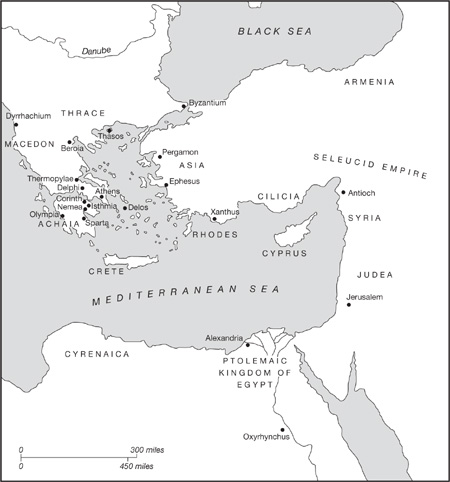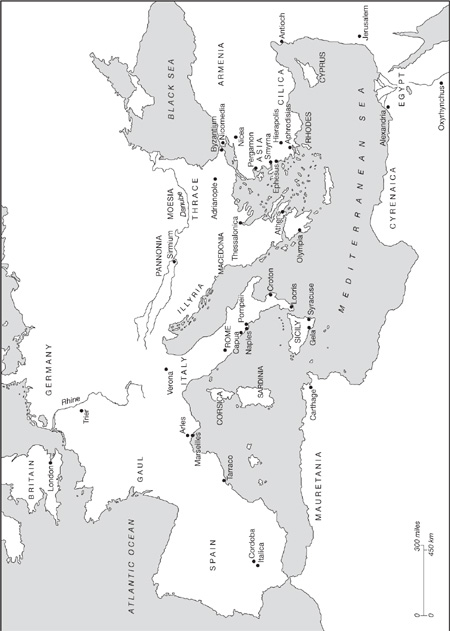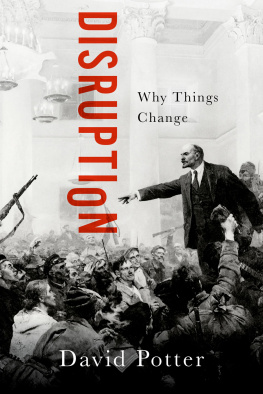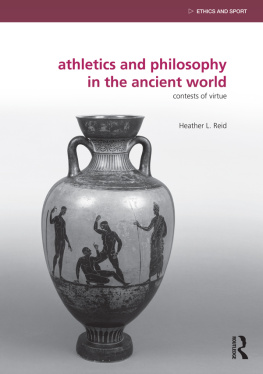The Victors Crown
The Victors Crown
A History of Ancient Sport from Homer to Byzantium
David Potter


Oxford University Press, Inc., publishes works that further
Oxford Universitys objective of excellence
in research, scholarship, and education.
Oxford New York
Auckland Cape Town Dar es Salaam Hong Kong
Karachi Kuala Lumpur Madrid Melbourne Mexico City Nairobi
New Delhi Shanghai Taipei Toronto
With offices in
Argentina Austria Brazil Chile Czech Republic France Greece
Guatemala Hungary Italy Japan Poland Portugal Singapore
South Korea Switzerland Thailand Turkey Ukraine Vietnam
First published as a hardcover original in Great Britain by Quercus
21 Bloomsbury Square, London WCIA 2NS
Copyright 2012 David Potter
First published as a paperback Original by Oxford University Press, Inc. 198 Madison Avenue, New York, New York 10016
www.oup.com
Oxford is a registered trademark of Oxford University Press
All rights reserved. No part of this publication may be reproduced, stored in a retrieval system, or transmitted, in any form or by any means, electronic, mechanical, photocopying, recording, or otherwise, without the prior permission of Oxford University Press.
Library of Congress Cataloging-in-Publication Data
Potter, D. S. (David Stone), 1957
The victors crown : a history of ancient sport from Homer to Byzantium / David Potter.
p. cm.
Includes bibliographical references.
ISBN 978-0-19-984275-9ISBN 978-0-19-984273-5
1. SportsHistory. 2. GreeceCivilization. 3. Byzantine EmpireCivilization. I. Title.
GV573.P67 2011
796.09dc22 2011008813
1 3 5 7 9 8 6 4 2
Printed in the United States of America on acid-free paper
Contents
List of Illustrations
. Evans reconstruction of the Taureador fresco.
. Marinatos reconstruction of the Taureador fresco.
. Terracotta image of a charioteer and horses from Olympia. Olympia Archaeological Museum
. Hoplitodromos. Indiana University Museum
. Panathenaic amphora with discus thrower and teacher by Euthymides, Museo Archeologico Nazionale, Naples, Italy. Scala / Ministero Beni e Att. Culturali
. Amphora with black figures engaged in a stadion race by Kleophrades, 500 - 490 BCE, Paris, Muse du Louvre. Scala / White Images
. Amphora depicting the end of a boxing match. National Archaeological Museum, Athens
. Two wrestlers. Hellenistic Bronze statuette from Alexandria, 2nd century BCE, Paris, Muse du Louvre. akg-images / Erich Lessing
. Wrestler about to drop his opponent on his head. Hellenistic Bronze statuette from Alexandria, 2nd century BCE, Paris, Muse du Louvre. akg-images / Erich Lessing
. Reconstruction of the Olympic site as it was in 476. Matthew Harrington
. Erotic scene depicting two male athletes engaged in homosexual intercourse. Terracotta black figure amphora, 5th century BCE, Museo Archeologico Nazionale, Naples, Italy. Vanni / Art Resource, NY
. Panathenaic prize amphora depicting a boxing contest, signed by the potter Kittos, made in Athens c. 367-366 BC . The Trustees of the British Museum
. Aerial view of the site of Olympia. CORBIS / Yann Arthus-Bertrand
. Paestum tomb painting of Gladiatorial combat. Lucanian funerary fresco, 4th3rd century BCE. Alinari / Topfoto
. Paestum tomb painting of a chariot race and gladiatorial combat. Lucanian funerary fresco. 4th3rd-century BCE Alinari / Topfoto
. The costly munus (public show and gift) offered by Magerius. Roman mosaic from Smirat (near Moknine). Mid 3rd-century CE. CORBIS / Ruggero Vanni
. Reconstruction of the amphitheatre. Matthew Harrington
. Restoration of the early 3rd-century CE gladiator mosaic at the Wadi Ledbda by Mohammed Ali Drogui. Leptis Magna, Libya. akg-images / Gilles Mermet
. Dar Buc Ammera Mosaic Sebastia Giralt
. Marble relief with female gladiators, Roman, 1st-2nd century AD. From Halikarnassos (modern Bodrum, Turkey). The Trustees of the British Museum
. Tombstone of Paralos and wife, Hierapolis.

The Eastern Mediterranean (with significant athletic sites mentioned in the text)

The Roman Empire
Preface
This book began some twenty years ago when my friend Ludwig Koenen, then chair of my department, asked me to take over a long-standing course on ancient sport. The many students who have taken the course over the years have continued to spark my interest in the subject, and I want here to register my profound appreciation both of them and of the generations of graduate students who have borne much of the teaching workload with me and helped the course to evolve. I am very grateful to Richard Mil-bank at Quercus who took this project on, to Richard Milner who has seen it into press, Josh Ireland who has overseen production and for the exceptional talent of Sue Phillpott who copy edited the book.
In the last five years it has been my great good fortune to serve as a member of the University of Michigans Advisory Board on Intercollegiate Athletics, and, as chairman of the governing committee of the faculty senate for one of those years, to look at the business of sport with a fresh eye. I am profoundly grateful to President Mary Sue Coleman and Bill Martin, the athletic director while this book was being written, for their support in these tasks. I have also had the opportunity to meet and work with some truly remarkable coaches and athletic administrators, including Lloyd Carr, Carol Hutchins, Ronni Bernstein (who also revived my tennis game), Judy Van Horn, Mike Stevenson, Greg Harden and Bitsy Ritt, as well as my colleagues on the board, Bruno Giordani and Stan Berent.
In writing this book I have received exemplary assistance from Nellie Kippley (a veteran of Roman sport and former captain of the Michigan Womens Gymnastics Team) who helped me understand modern training techniques and the experience of athletes at the highest level of intercollegiate competition. I have also received invaluable assistance from Matt Newman, a student in the UMs Graduate Program in Classical Philology. Others who offered sage advice on earlier versions include Mike Sampson, Karen Acton and Nate Andrade. I am also enormously grateful to a number of colleagues, especially Arthur Verhoogt, who read most of the manuscript, Sara Forsdyke, who guided me through the history of Greece, and Chris Ratt, a sure guide on archaeological issues. My most important source of support and comfort has been, as ever, my family Ellen, Claire and Natalie.
Then and Now
It is the night of 9 July 2006. In Berlin, Fabio Grossos penalty kick eludes French goalkeeper Fabien Barthez. The huge crowd in Romes Circo Massimo erupts. Italy has won its fourth World Cup in front of 260 million spectators, drawn all around the world to television sets or giant screens such as those in the Circo. Never had so many human beings watched a single event. But it is with those gathered in the Circo Massimo that we will begin. They link our world with another which, though long gone, may still, in many ways, help us understand our own.
Next page












